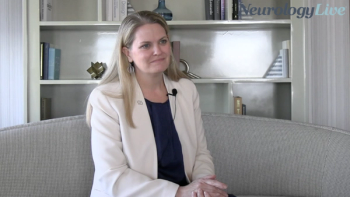
Pulse Wave Amplitude Identifies Respiratory Events in Pediatric Polysomnography
Researchers found that taking into account PWA increased total arousal index more than 3-fold.
Data from a recent study suggest that drop in pulse wave amplitude (PWA) can be used to guide scoring arousals not easily identified in pediatric
Researchers found that after taking into account arousals from PWA changes, total apnea-hypopnea index (AHI) increased from 2.3 per hour (standard deviation [SD], 0.7) to 5.7 (SD, 2.1; P <.001) on polysomnography (PSG), obstructive AHI increased from 1.45 per hour (SD, 0.7) to 4.8 (SD, 1.8; P <.001), and respiratory disturbance index (RDI) increased from 2.36 per hour (SD, 0.7) to 7.6 (SD, 2.0; P <.001).
“As children have high arousal threshold, many of the flow limited breaths or hypopneas may not be associated with visual electroencephalogram (EEG) arousals, hence this may lead to potential underestimation of the degree of sleep disordered breathing,” wrote first author Baha Al-Shawwa, MD, director, Sleep Center, Children’s Mercy Hospital and associate professor, pediatrics, University of Missouri-Kansas City School of Medicine and colleagues.
Al-Shawwa and colleagues analyzed data from 10 PSGs for patients between the ages of 5 and 15 years with mild obstructive sleep apnea (OSA) and AHIs between 1 and 5 events per hour. PWA signal is obtained from finger photoplethysmography. Signal drops of at least 30% for 3 seconds were required to identify subcortical/autonomic arousals.
READ MORE:
In total, 10 patients with an average age of 9.8 years (SD, 3.1) were included in the study, 2 of which were female (20%). Patients had, according to PSG, an average total sleep time of 464.1 minutes (SD, 25), sleep efficiency of 92% (SD, 4.2), sleep latency of 19.6 minutes (SD, 17.0), and rapid eye movement (REM) latency of 143 minutes (SD, 66).
Average N1 sleep percentage was 3.9% (SD, 2.0), N2 sleep percentage 50.3% (SD, 12.0), N3 sleep percentage 28.2% (SD, 9.1), REM sleep percentage 16.7% (SD, 4.0), and wakefulness after sleep onset (WASO) of 18.1 minutes (SD, 7.5). Mean oxygen saturation was 97% (SD, 1.1) and oxygen nadir was 91.4% (SD, 3.1). The mean maximum end-tidal carbon dioxide was 49 mm Hg (SD, 2.8).
Al-Shawwa and colleagues found that taking into account drop in PWA increased total arousal index from 8.7 per hour (SD, 3.2) to 29.4 per hour (SD, 6.5); P <.001). All respiratory indices significantly increased, with overall AHI increasing from 2.3 per hour (SD, 0.7) to 5.7 (SD, 2.1; P <.001), obstructive AHI increasing from 1.45 per hour (SD, 0.7) to 4.8 (SD, 1.8; P <.001), and respiratory disturbance index (RDI) increasing from 2.36 per hour (SD, 0.7) to 7.6 (SD, 2.0; P <.001).
AHI progressed from mild (1-5 events/hour) to moderate (5-10 events/hour) in 5 patients (50%), signifying a change in classification from mild to moderate OSA.
“We hope that this pilot study highlights the importance of evaluating non-conventional methods to identify arousals using the drop in PWA as a surrogate marker for cortical and autonomic arousals. This method is widely available in many PSG acquisition software systems and will likely lead to a better characterization of sleep disruption and scoring respiratory events. Further larger studies are needed to confirm our findings,” Al-Shawwa and colleagues concluded.
World Sleep Day was March 19, 2021 and William Noah, MD, director and founder, Sleep Centers of Middle Tennessee and OSAinHome, contributed an article to NeurologyLive about
He stressed the importance of testing for OSA in people that snore, have hypertension, type-2 diabetes, and cardiovascular disease. He also discussed his team’s efforts to modernize the term OSA to a more inclusive one that encompasses complete and partial sleep obstructions.
REFERENCE
Al Shawwa B, Cruz J, Ehsan Z, Ingram DG. The challenges in scoring hypopneas in children: is pulse wave amplitude drop the answer? Sleep Med. 2021; 81: 336-340. doi: 10.1016/j.sleep.2021.02.049
Newsletter
Keep your finger on the pulse of neurology—subscribe to NeurologyLive for expert interviews, new data, and breakthrough treatment updates.

































